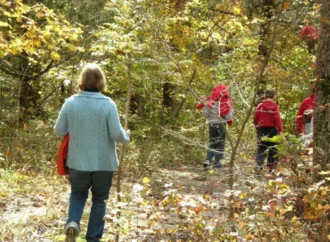Dr. Arturo Casadevall and Dr. Ferric C. Fang correctly distilled down the scientific method into a five word query: “but what if I’m wrong?” One would hope that as these two microbiologists step out of the comfort zone of their field into the politically charged and messaging-driven world of environmental science and policy they ask themselves the same question.
It would undoubtedly surprise Dr. Casadevall and Dr. Fang to learn that those of us they choose to denigrate at “deniers” choose to self-identify as skeptics, precisely because we constantly ask ourselves that very question. Indeed, because we ask ourselves that question, there is no single skeptical view, nor should there be when considering a public policy issue so complex – yet so often ludicrously over-simplified – as climate change.
I’m a chemist with over thirty years’ experience working on air quality issues (full disclosure: working for industry, so I’m obviously under marching orders from Exxon-Mobil or the Koch brothers or perhaps Dr. Evil). I can’t claim to have anything like the expertise in their field as Casadevall and Fang, but everything I have read convinces me that they are absolutely correct in their strong opinion that there is no link between vaccines and autism, and that GMOs are not only safe, they are beneficial. They are to be commended for using their knowledge and experience to defend science within their field.
There is a big difference between the vaccine and GMO issues and the climate change issue. The first two are purely about demonstrable, focused scientific facts used to help determine the direction of public policy. In contrast, what we call climate change includes: a multiplicity of scientific disciplines; a variety of what are called facts, some of which are demonstrable, some of which are not, and some of which occupy the gray area in between; risk vs. reward analysis and economic impacts.
The presumption that 97% of scientists agree, or would somehow be qualified to agree, on all aspects of what is simplified into the two word descriptor “climate change” is ludicrous. The 97% talking point, to which the PR apparatus of the fanatic alarmists so desperately cling, is based on the answer to a single answer to a question in an extremely limited survey. The question boils down to “do you believe carbon dioxide can act as a greenhouse gas?” Count me in among the magical 97% in answer to that question. Unfortunately it’s a meaningless question, for it fails to address any of the other questions that exist and are decidedly unsettled beneath the umbrella of something called “climate change”.
What are those questions? Why do they matter? Here’s just a few:
- How well do we understand the pre-industrial climate record, when we didn’t have instruments to measure temperatures in an organized, verifiable fashion? This speaks to figuring out how usual or unusual current climate trends are or are not.
- How reliable are current, post-industrial climate records, especially considering the big difference in trends between satellite measurements of atmospheric temperatures and surface/sea temperature records? This is about how much or how little the climate is currently changing in the macroscopic sense.
- How much of observed variations in the temperature record can be reliably attributed to increases in atmospheric carbon dioxide concentrations? This deals with the fact that carbon dioxide is a relatively weak greenhouse gas and it’s actual vs. predicted role in increasing the concentration of atmospheric water vapor – a far more powerful greenhouse gas – via a feedback mechanism. Tangentially, this question also deals with other contributors to climate change, such as solar activity and cloud cover.
- What benefits can be attributed to increased atmospheric carbon dioxide concentrations? There is evidence that increasing carbon dioxide concentrations results in increased crop yields and further greening of the planet. These are things to be considered.
- What risks to we assume if we don’t attempt to mitigate increasing carbon dioxide concentrations in the atmosphere? This question is chiefly about the potential of sea level rise and temperature increases so severe that the amount of agricultural land would decrease.
- How do the costs of greenhouse gas emissions reduction, by attempting to satisfy the majority of our energy demands through the use of renewable fuels, compare to the costs of mitigating the potential effects of climate change? Here we should focus primarily on the third world. When energy prices rise, living conditions in the third world degrade. Any sober policy evaluation should compare the potential effects of massive changes in energy generation vs. the consequences of not doing so in the less-developed countries.
- How accurate have the doom-predicting climate models been so far? Nuff said.
- Given that the United States has been reducing its greenhouse gas emissions for the last ten years, what further environmental benefit might be gained if the United States implemented measures to reduce our greenhouse gas emission even further? Spoiler alert: The USA could reduce its greenhouse gas emissions to zero and it would make no significant difference in the climate disaster predictions of the alarmist climate models.
I hope Dr. Casadevall and Dr. Fang consider the above questions in the spirit of “but what if I’m wrong”. I invite them to have a further discussion on any or all of the above questions I’ve raised. I can’t claim to be an expert on all of them, but I can certainly put you in contact with like/open-minded experts who deal with any of the above.
–
This Heartland Institute article was republished with permission from the Heartland Institute.
[Image Credit: Flickr-Takvr | CC BY SA 2.0]
















Leave a Comment
Your email address will not be published. Required fields are marked with *